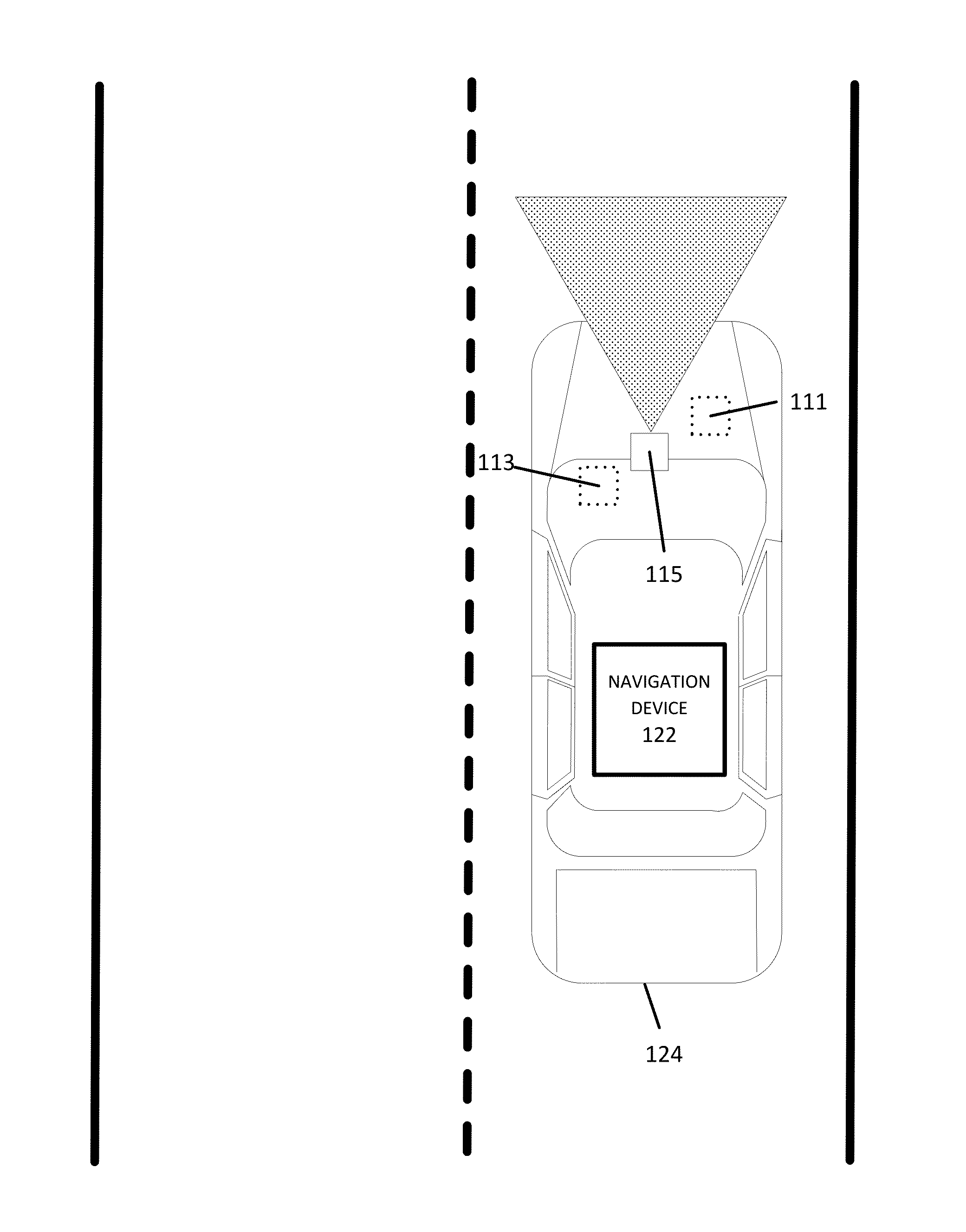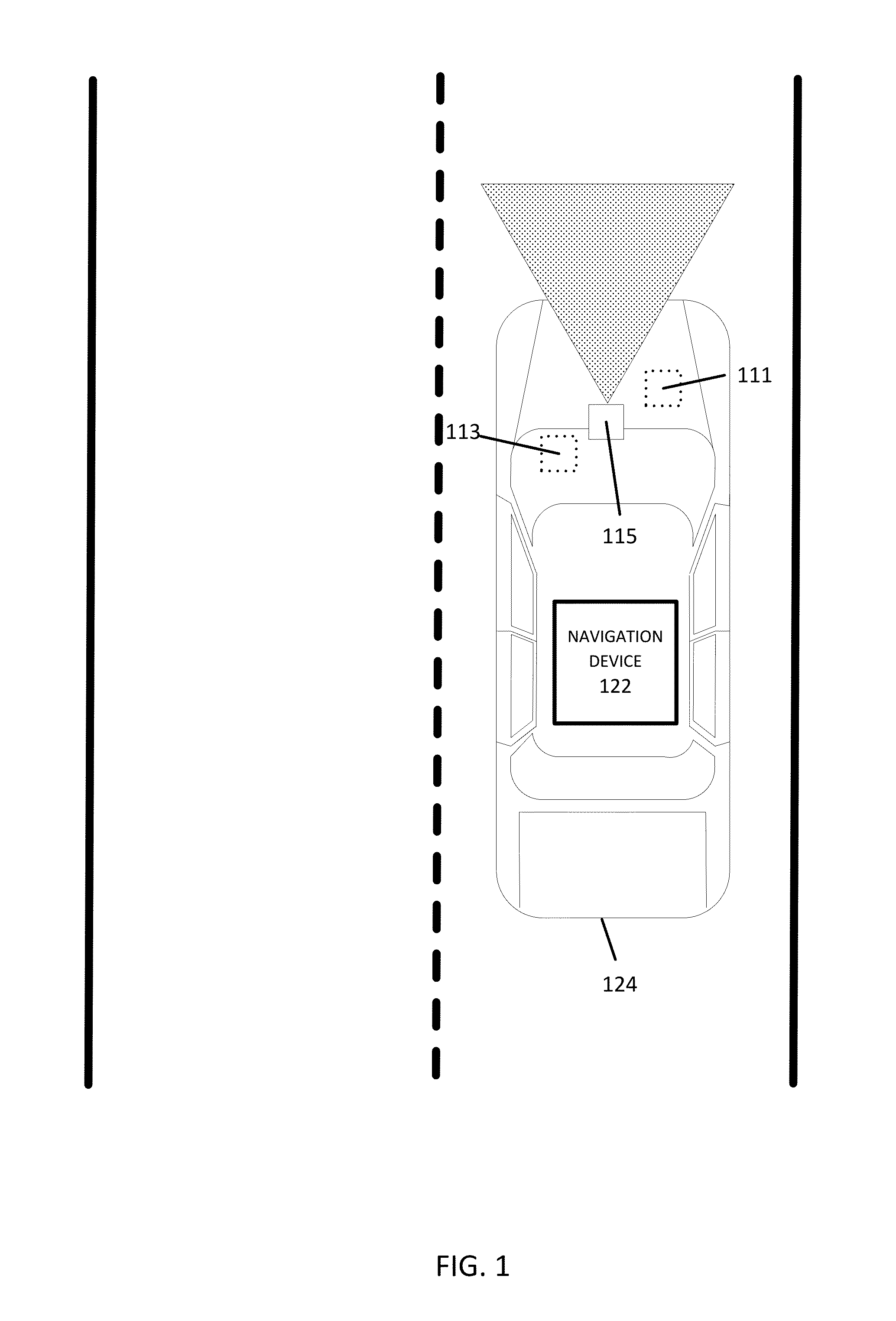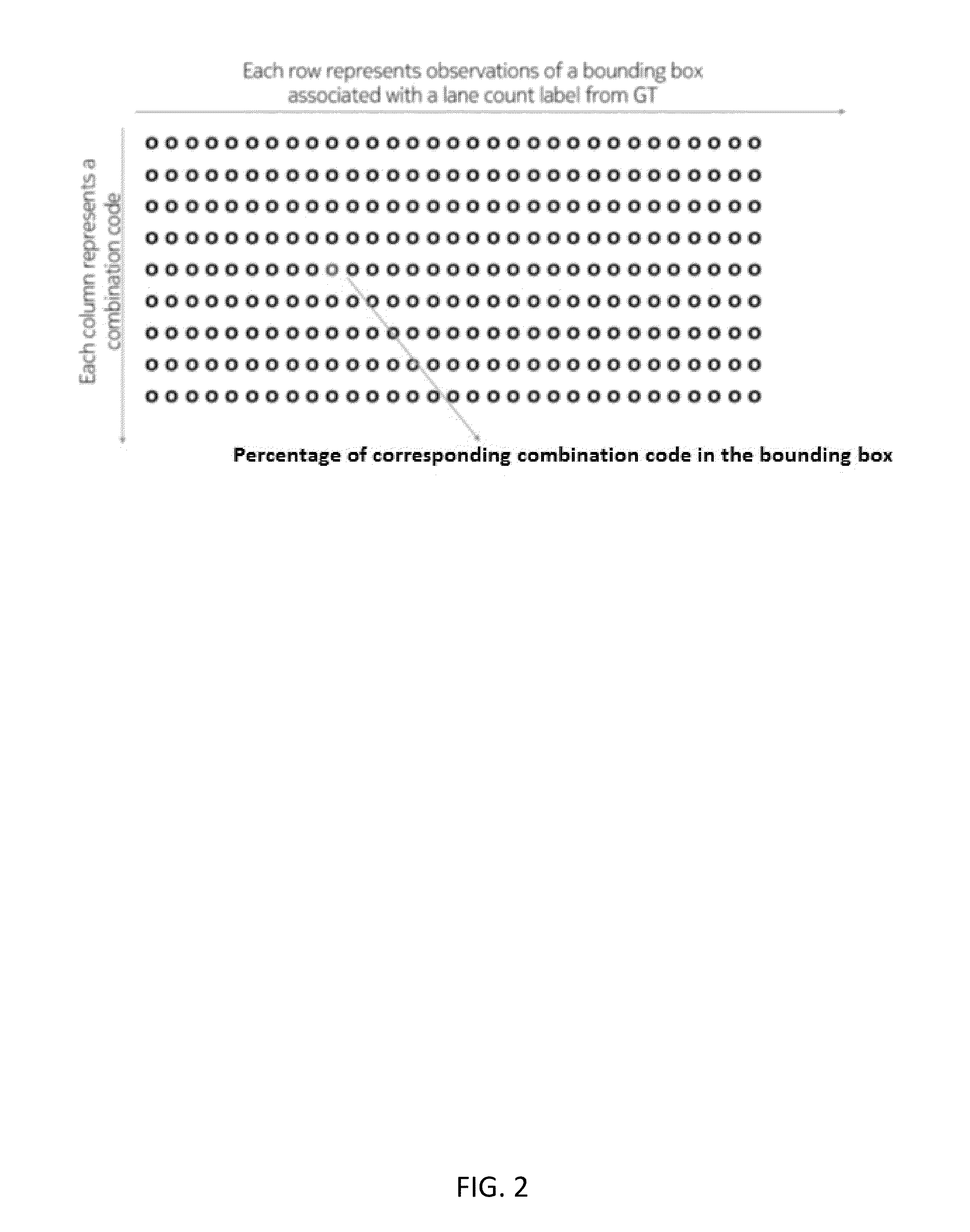Learning Lanes From Vehicle Probes
a technology of vehicle probes and lanes, applied in the field of learning lanes from vehicle probes, can solve the problems of inability to timely report a major, inability to accurately determine the lanes of the roadway segment, and inability to accurately represent the lanes
- Summary
- Abstract
- Description
- Claims
- Application Information
AI Technical Summary
Benefits of technology
Problems solved by technology
Method used
Image
Examples
Embodiment Construction
[0022]The following embodiments include determining lane information (e.g., number of lanes, current lane location, and lane width) of a road segment from vehicle probe data.
[0023]As used herein, a “road” or “roadway” may refer to any traveling lane or pathway that may be capable of being monitored for traffic congestion / incident detection, or may become capable of being monitored for traffic congestion / incident detection in the future (e.g., a highway, city street, bus route, train route, walking / biking pathway, waterway).
Collecting Vehicle Probe Data
[0024]Road or lane information for a selected road segment may be determined through the collection, reporting, and analysis of vehicle probe data from a plurality of vehicles. In certain embodiments, for each vehicle of the plurality of vehicles, the vehicle probe data is collected by at least one vehicle sensor. The vehicle sensors are configured to identify the surroundings and the location of the probe vehicle (e.g., car, truck, mo...
PUM
 Login to View More
Login to View More Abstract
Description
Claims
Application Information
 Login to View More
Login to View More - R&D
- Intellectual Property
- Life Sciences
- Materials
- Tech Scout
- Unparalleled Data Quality
- Higher Quality Content
- 60% Fewer Hallucinations
Browse by: Latest US Patents, China's latest patents, Technical Efficacy Thesaurus, Application Domain, Technology Topic, Popular Technical Reports.
© 2025 PatSnap. All rights reserved.Legal|Privacy policy|Modern Slavery Act Transparency Statement|Sitemap|About US| Contact US: help@patsnap.com



